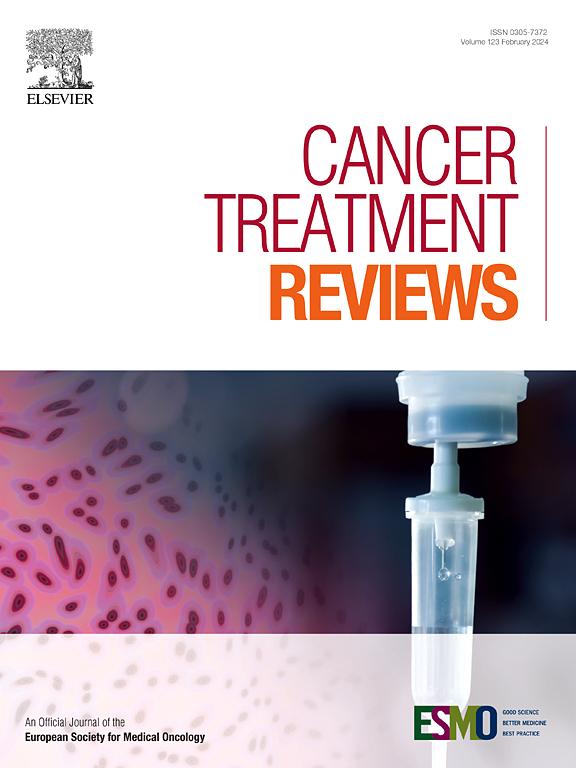Individualizing first-line treatment for advanced urothelial carcinoma: A favorable dilemma for patients and physicians
IF 9.6
1区 医学
Q1 ONCOLOGY
引用次数: 0
Abstract
The treatment landscape for patients with advanced urothelial carcinoma (UC) has evolved rapidly in recent years. In current guidelines, combination treatment with enfortumab vedotin plus pembrolizumab is the first-line (1L) standard of care, and other recommended 1L treatment options are platinum-based chemotherapy followed by avelumab as switch-maintenance treatment in patients without progression, or combination treatment with nivolumab, cisplatin, and gemcitabine for cisplatin-eligible patients only. Individual patients differ in terms of their health status, disease characteristics, expected toxicities, and treatment preferences; thus, a “one-size-fits-all” approach to treatment is unlikely to be optimal. The availability of several treatment options creates the potential for individualized treatment. In this review, we discuss factors that may be considered when selecting 1L treatment for patients with advanced UC, including efficacy and safety data from phase 3 trials and real-world studies, quality of life, patient priorities for treatment, patient and disease characteristics, treatment sequencing, biomarkers, and treatment access and cost. Patients and physicians should discuss the benefit-risk balance of all available 1L options to enable shared decision-making. Longer follow-up from clinical trials and additional real-world studies are needed to further inform treatment selection.
个体化一线治疗晚期尿路上皮癌:对患者和医生有利的困境
近年来,晚期尿路上皮癌(UC)患者的治疗方案发展迅速。在目前的指南中,用enfortumab vedotin和pembrolizumab联合治疗是一线(1L)标准治疗,其他推荐的1L治疗方案是在无进展的患者中,以铂为基础的化疗,然后用avelumab作为切换维持治疗,或者只对符合顺铂条件的患者,用nivolumab、顺铂和吉西他滨联合治疗。个体患者在健康状况、疾病特征、预期毒性和治疗偏好方面存在差异;因此,“一刀切”的治疗方法不太可能是最佳的。多种治疗方案的可用性创造了个体化治疗的潜力。在这篇综述中,我们讨论了在为晚期UC患者选择1L治疗时可能考虑的因素,包括来自3期试验和现实世界研究的疗效和安全性数据、生活质量、患者优先考虑的治疗、患者和疾病特征、治疗顺序、生物标志物、治疗可及性和成本。患者和医生应讨论所有可用的1L方案的利益-风险平衡,以便共同决策。需要从临床试验和额外的现实世界研究中进行更长的随访,以进一步为治疗选择提供信息。
本文章由计算机程序翻译,如有差异,请以英文原文为准。
求助全文
约1分钟内获得全文
求助全文
来源期刊

Cancer treatment reviews
医学-肿瘤学
CiteScore
21.40
自引率
0.80%
发文量
109
审稿时长
13 days
期刊介绍:
Cancer Treatment Reviews
Journal Overview:
International journal focused on developments in cancer treatment research
Publishes state-of-the-art, authoritative reviews to keep clinicians and researchers informed
Regular Sections in Each Issue:
Comments on Controversy
Tumor Reviews
Anti-tumor Treatments
New Drugs
Complications of Treatment
General and Supportive Care
Laboratory/Clinic Interface
Submission and Editorial System:
Online submission and editorial system for Cancer Treatment Reviews
 求助内容:
求助内容: 应助结果提醒方式:
应助结果提醒方式:


